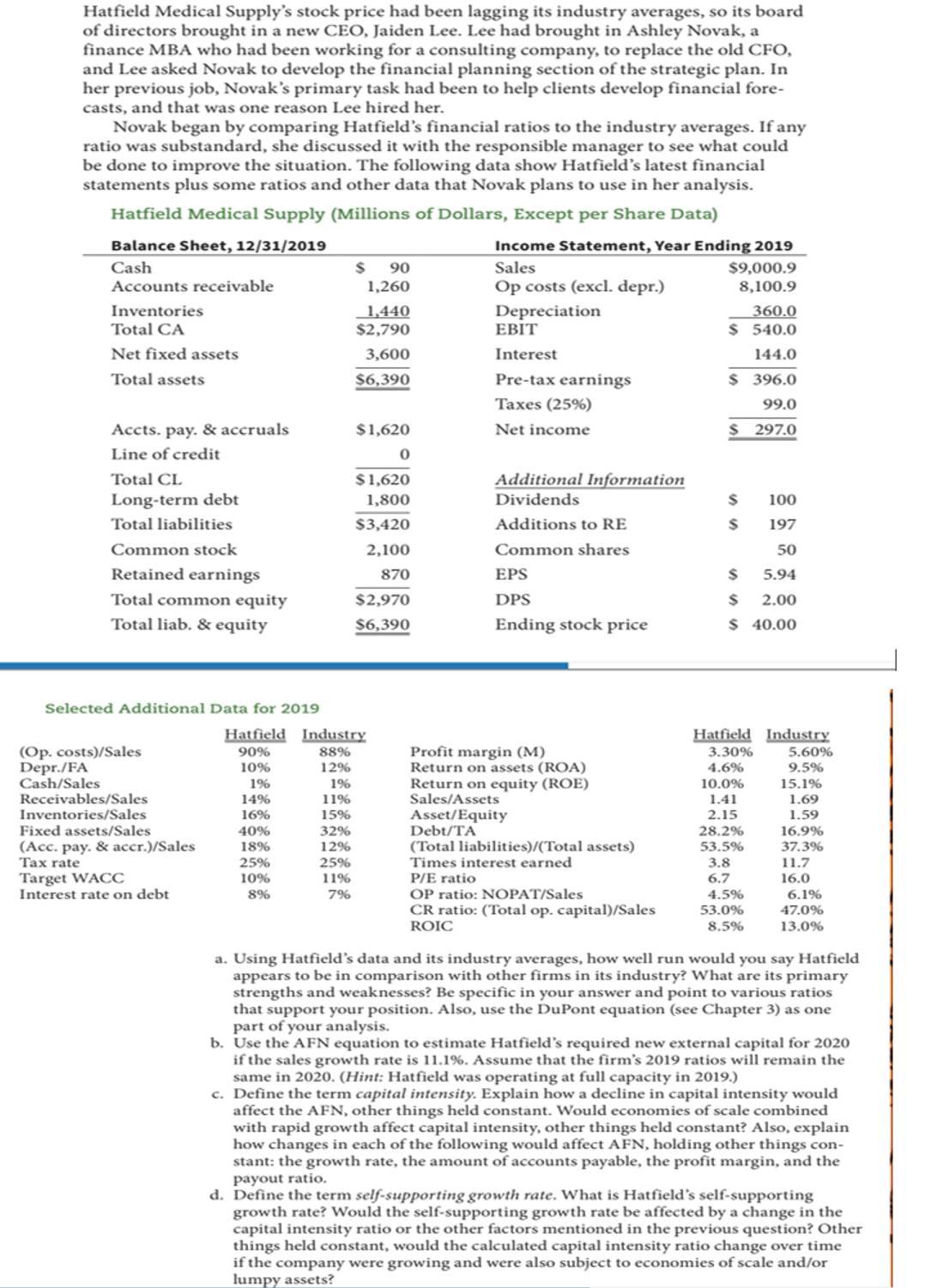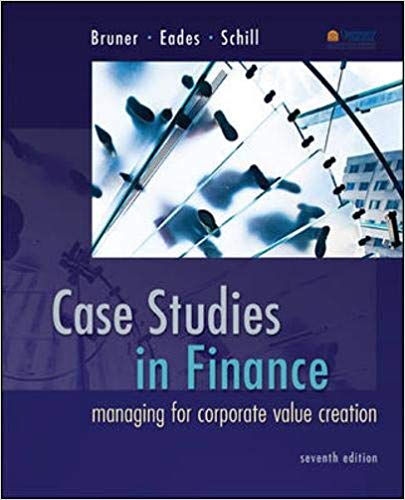Hatfield Medical Supply's stock price had been lagging its industry averages, so its board of directors brought in a new CEO, Jaiden Lee. Lee

Hatfield Medical Supply's stock price had been lagging its industry averages, so its board of directors brought in a new CEO, Jaiden Lee. Lee had brought in Ashley Novak, a finance MBA who had been working for a consulting company, to replace the old CFO, and Lee asked Novak to develop the financial planning section of the strategic plan. In her previous job, Novak's primary task had been to help clients develop financial fore- casts, and that was one reason Lee hired her. Novak began by comparing Hatfield's financial ratios to the industry averages. If any ratio was substandard, she discussed it with the responsible manager to see what could be done to improve the situation. The following data show Hatfield's latest financial statements plus some ratios and other data that Novak plans to use in her analysis. Hatfield Medical Supply (Millions of Dollars, Except per Share Data) Balance Sheet, 12/31/2019 Income Statement, Year Ending 2019 Sales $9,000.9 Cash $ 90 Accounts receivable 1,260 Op costs (excl. depr.) 8,100.9 Inventories 1,440 Depreciation 360.0 Total CA $2,790 EBIT $ 540.0 Net fixed assets 3,600 Interest 144.0 Total assets $6,390 Pre-tax earnings $ 396.0 Taxes (25%) 99.0 Accts. pay. & accruals $1,620 Net income $ 297.0 Line of credit 0 Total CL $1,620 Long-term debt 1,800 Additional Information Dividends $ 100 Total liabilities $3,420 Additions to RE $ 197 Common stock 2,100 Common shares 50 Retained earnings 870 EPS $ 5.94 Total common equity $2,970 DPS $ 2.00 Total liab. & equity $6,390 Ending stock price $ 40.00 Selected Additional Data for 2019 Hatfield Industry Hatfield Industry (Op. costs)/Sales 90% 88% Profit margin (M) Depr./FA 10% 12% Return on assets (ROA) 3.30% 4.6% 5.60% 9.5% Cash/Sales 1% 1% Return on equity (ROE) 10.0% 15.1% Receivables/Sales 14% 11% Sales/Assets 1.41 1.69 Inventories/Sales 16% 15% Asset/Equity 2.15 1.59 Fixed assets/Sales 40% 32% Debt/TA 28.2% 16.9% (Acc. pay. & accr.)/Sales 18% 12% (Total liabilities)/(Total assets) 53.5% 37.3% Tax rate 25% 25% Times interest earned 3.8 11.7 Target WACC 10% 11% P/E ratio 6.7 16.0 Interest rate on debt 8% 7% OP ratio: NOPAT/Sales 4.5% 6.1% CR ratio: (Total op. capital)/Sales 53.0% 47.0% ROIC 8.5% 13.0% a. Using Hatfield's data and its industry averages, how well run would you say Hatfield appears to be in comparison with other firms in its industry? What are its primary strengths and weaknesses? Be specific in your answer and point to various ratios that support your position. Also, use the DuPont equation (see Chapter 3) as one part of your analysis. b. Use the AFN equation to estimate Hatfield's required new external capital for 2020 if the sales growth rate is 11.1%. Assume that the firm's 2019 ratios will remain the same in 2020. (Hint: Hatfield was operating at full capacity in 2019.) c. Define the term capital intensity. Explain how a decline in capital intensity would affect the AFN, other things held constant. Would economies of scale combined with rapid growth affect capital intensity, other things held constant? Also, explain how changes in each of the following would affect AFN, holding other things con- stant: the growth rate, the amount of accounts payable, the profit margin, and the payout ratio. d. Define the term self-supporting growth rate. What is Hatfield's self-supporting growth rate? Would the self-supporting growth rate be affected by a change in the capital intensity ratio or the other factors mentioned in the previous question? Other things held constant, would the calculated capital intensity ratio change over time if the company were growing and were also subject to economies of scale and/or lumpy assets?
Step by Step Solution
There are 3 Steps involved in it
Step: 1
To answer the questions given the financial data for Hatfield Medical Supply lets go through each part step by step Question a Using Hatfields data and its industry averages how well you would say Hat...
See step-by-step solutions with expert insights and AI powered tools for academic success
Step: 2

Step: 3

Ace Your Homework with AI
Get the answers you need in no time with our AI-driven, step-by-step assistance
Get Started


